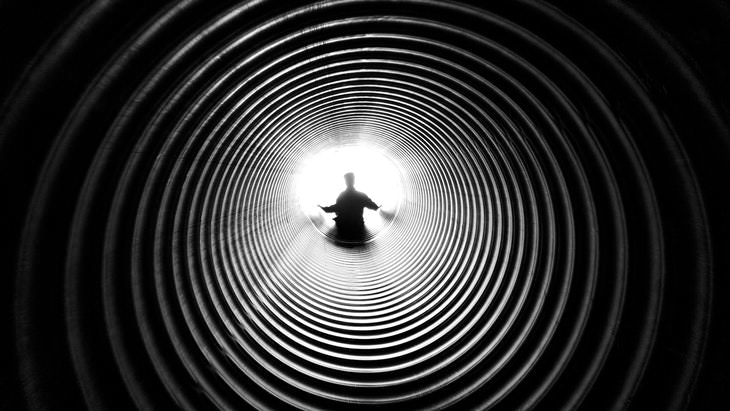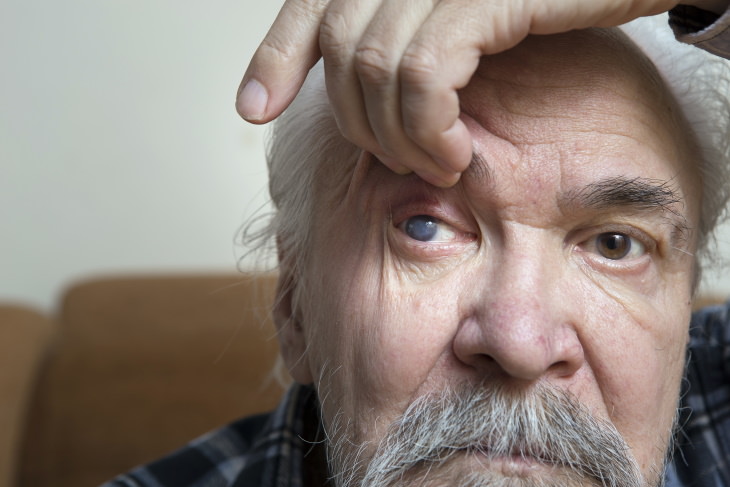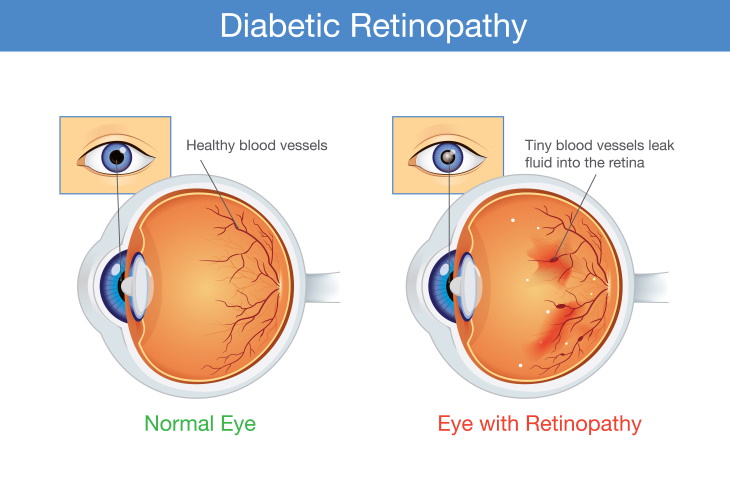What is tunnel vision?

Tunnel vision, also known as peripheral vision loss (PVL) or tubular vision, is a condition when your line of sight is restricted so you don’t see on the perimeter of your visual field without turning your head sideways. People with severe PVL often explain their vision as “looking through a tunnel,” which is how the condition got its common name.
Tunnel vision is more serious than it may sound at first glance. A person with peripheral vision loss can only see something when he or she is directly looking at it. This limits one’s ability to avoid hazards or danger while walking, driving a car, or pretty much any daily activity that involves moving around in space.
Depending on the underlying cause, tunnel vision can occur in either one or both eyes. PVL can have the following symptoms:
- The outskirts of your field of vision are dark or blurry, but the middle of your line of sight is clear.
- You have bad night vision.
- You’re prone to bump into objects or fall.
- Reading and driving are challenging.
- It’s difficult for you to move around in a crowded or narrow location.
Tunnel vision may be caused by a variety of underlying health conditions. Identifying the cause is crucial for it improves your chances of preserving your eyesight or even restoring it completely. We review the possible causes of tunnel vision below.
Related Article: 15 Habits You Should Avoid to Maintain Sharp Vision
1. Glaucoma and other eye diseases

Peripheral vision loss is often caused by eye diseases that involve the retina. The retina contains special cells that sense light called rods and cones. These photoreceptors detect light and transmit information to the brain, allowing us to see. When the retina is obscured or damaged, you may experience peripheral vision loss.
Tunnel vision, particularly in the area closest to the nose, is one of the first symptoms of glaucoma, the second biggest cause of complete vision loss in the US according to the American Optometric Association. Glaucoma develops when the fluid pressure in the eye spikes, causing damage to the optic nerve. The optic nerve connects the eye and the brain, so any damage can lead to vision problems.
Apart from tunnel vision, glaucoma manifests itself through the following symptoms:
- Blind spots
- Blurry or cloudy vision
- Sharp pain in the eye
- Seeing halos around lights
- Headaches
- Nausea or vomiting.
Untreated glaucoma can lead to blindness, but early treatment can halt vision loss.
Other eye diseases that can cause peripheral vision loss are:

- Retinitis Pigmentosa is an irreversible genetic condition that affects the way the retina reacts to light. Loss of night vision, central vision, difficulty identifying colors are common symptoms. There is no treatment for retinitis pigmentosa.
- Nuclear Cataracts occur when proteins build up in the center of the lens and damage its edges, causing PVL. Blurry vision, light sensitivity, loss of night vision, a yellowish or faded perception of colored objects, and double vision can also occur. Cataracts can be removed through surgery.
- Retinal Detachment is a medical emergency. When the retina separates itself from the back of the eye, you can experience vision loss or see floaters in the peripheral field. If not treated in time, retinal detachment can cause complete vision loss.
- Optic Neuritis refers to the inflammation of the optic nerve. Infections can cause this condition, but it may also be an early symptom of multiple sclerosis. See a doctor if you experience PVL, feel pain in the eye, see flashing lights or lose color vision.
2. Diabetic retinopathy
When a person has high blood sugar, it can harm the retina and causes a condition called diabetic retinopathy. This condition occurs because excessive blood sugar injures the tiny blood vessels in the retina and makes blood leak into the retina.
At first, it may not manifest itself through any symptoms, but over time, you may notice minor changes in vision, namely difficulty reading, seeing faraway objects, or a reduction in peripheral vision. Later on, dark spots and streaks may begin to appear in your line of sight.
Damage caused by diabetic retinopathy is non-reversible, but treatment can prevent further vision loss. If you suffer from diabetes and experience any vision changes, see your doctor and ask for a referral to the ophthalmologist.
3. Migraines
Migraines are known to cause visual disturbances that can occur either before or during an episode. Apart from intense head pain, migraine sufferers sometimes experience tunnel vision or complete vision loss in either one or both eyes.
Luckily, these symptoms are usually temporary and go away on their own within 20-60 minutes - states the American Migraine Foundation. If these symptoms do not resolve entirely after 1 hour, you need immediate medical help.
In some cases, visual disturbances are the only symptom of a migraine. This type of migraine is referred to as an ocular migraine, and it is caused by a temporary reduction of blood flow or a spasm in the blood vessels in the eye. People describe an ocular migraine as seeing stars or shimmers in their visual field. Peripheral vision loss and blind spots can also occur. Ocular migraine episodes are largely harmless and usually go away on their own within a few minutes.
4. Stroke or concussion
Peripheral vision loss may also be an indication of damage directly in the brain tissue. If a stroke occurs in the area of the brain responsible for vision, it could lead to blurry vision or vision loss. In most cases, stoke affects both eyes.
Recovery is not always possible, it all depends on the extent of the damage and the area of the brain affected by the stroke. Some vision can be restored without any medical interventions, but full recovery is relatively rare. The British and Irish Orthoptic Society points out that nearly half of stroke survivors with visual field loss experience some improvement, usually 3-6 months after the stroke.
Concussions may result in nearly identical but usually temporary symptoms.
5. Alcohol intoxication
Sometimes, peripheral vision loss is not a sign of a medical issue. If you drink too much alcohol, you may experience blurry vision or tunnel vision. Since alcohol is a depressant, it slows down your brain’s reactions and impairs your coordination. If you’ve ever felt dizzy after a few too many drinks, you know what we mean.
Now, your arms and legs aren’t the only body parts that get affected by alcohol - your eye muscle coordination can be weakened by alcohol too. This kind of tunnel vision is usually temporary, but excessive alcohol consumption can harm brain cells over time, so it could lead to long-term vision problems too.
What can you do if you have tunnel peripheral vision loss?
Identifying and managing the underlying cause is the best way to treat tunnel vision. This can help prevent it from getting worse. Your GP and eye doctor will work together to prevent further vision loss or completely treat the condition.
If you suffer from tunnel vision, it’s also essential to adjust your home setup to avoid injuries and falls: place furniture farther apart, remove any sharp or breakable objects from open shelves or tables, clear the home of slippery rugs or low furniture that can be a tripping hazard, etc.
Whenever you notice sudden visual disturbances that are accompanied by sudden confusion, headache, difficulty walking, problems with coordination, or difficulty understanding speech or speaking, seek emergency medical care, as you may be experiencing a stroke.
Share this information with those who will benefit from it!








